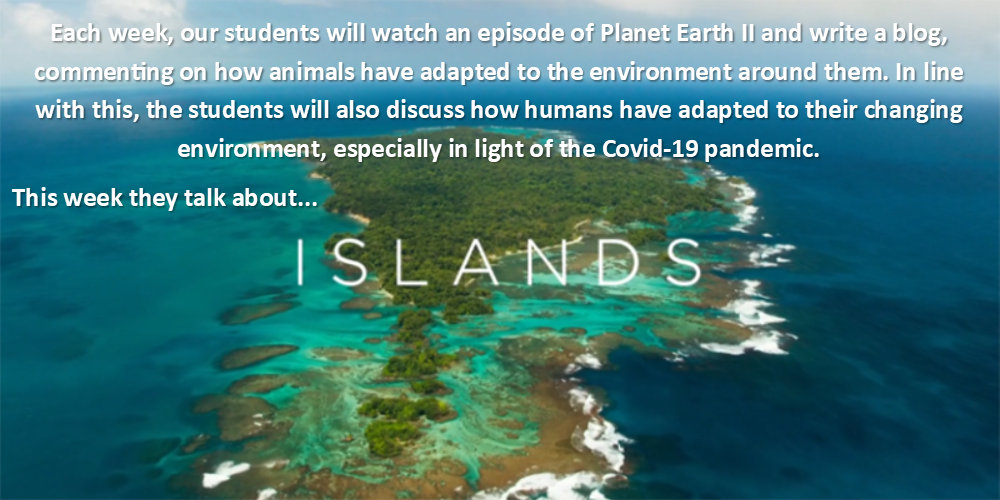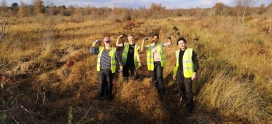Planet Earth 2 – Islands – Michael McCoy
Planet Earth 2 – Islands
Blog by Michael McCoy
Hi guys, so I was tasked with watching the BBC documentary “Planet Earth II” and writing about the different adaptations within the animal kingdom. The programme is narrated by Sir David Attenborough and focuses on how many different animal species have managed to live together and adapt to the changing environment around them. The first episode was based on many different islands around the world which are generally very small and nearly untouched by man. Due to the lack of human activity, habitats have been allowed to grow and remain undisturbed.
Komodo Island in Indonesia is home to the largest lizard species in the world known as the Komodo dragon. A very large and fierce predator, the Komodo dragon dominates the island. Due to few resources of food, the Komodo dragon has adapted by being able to live on a single meal a month at a time. They do this by lowering their metabolic rate and take in heat from the sun to warm themselves rather than keep a constant body temperature like ourselves. When it comes to seeking a partner, body size is everything as large males can overpower smaller males and chase off any competition. The Dragons have gained many evolutionary features to aid them such as sharp teeth, thick skin made out of scales and a large tail to injure or kill their opponents.
The island of Madagascar has quite a unique range of habitats that contains many species which you wouldn’t find anywhere else in the world. The most famous are the Lemurs, which contain over 100 different species from one common ancestor. Each species have adapted to the environment in their own way. Some Lemurs have evolved to live in warm climates by having special kidneys that allows them to retain more water in their body. This is important as it prevents dehydration due to a lack of water in the surrounding area. Lemurs teach their young the different tricks and social skills that they have used to survive as eventually the young will have to fend for themselves.
Fernandina island , the latest of the Galapagos islands, formed through volcanic activity with molten lava cooling and becoming solid after an eruption. Many species have tried to live there but it is a harsh environment with little nutrients. However, the island is home to particularly strange creatures. The Marine Iguanas gather on the edge of black lava rock and dive into the sea. The reason for this is due to the Iguanas being herbivores and since there is too little vegetation on land, they dive into the ocean and eat algae. The Iguanas have adapted to the water by having partially webbed feet and specialised lungs that allow them to hold their breath for 30 minutes. They have also formed symbiotic relationships with other species. This means that both species benefit from interaction. The main example is how Sally Light Crabs feed off the mites that attach onto the Iguanas while exfoliating the iguana’s skin in the process.
The documentary has shown how these islands are teeming with life and are home to a variety of rare and wonderful species, which have adapted to their environment over thousands of years of evolution. However, over recent decades, human activity is threatening these environments. Due to the introduction of non-native invasive species, overfishing, pollution and overall climate change, we are seeing a decline in many species as they cannot adapt fast enough. As many of the islands are quite small, they are very delicate and will not require much to upset the balance of the ecosystems and their inhabitants. Therefore it is important, as humans, to think of the actions we undertake and help reduce the activities which could potentially destroy these islands.




